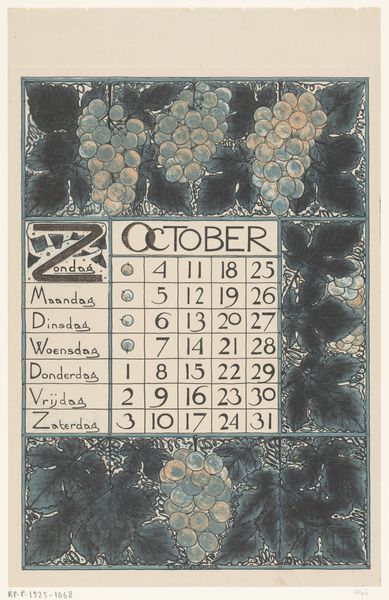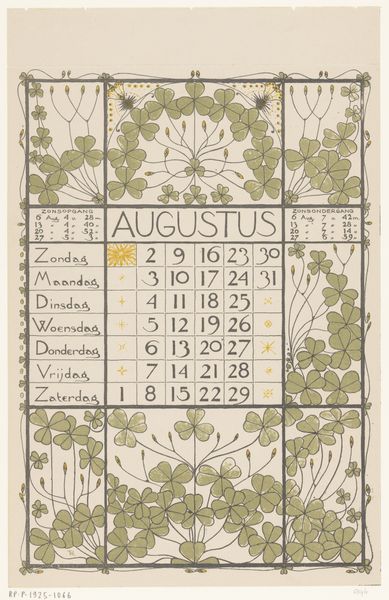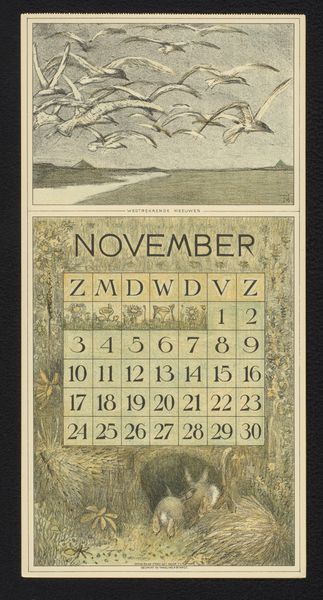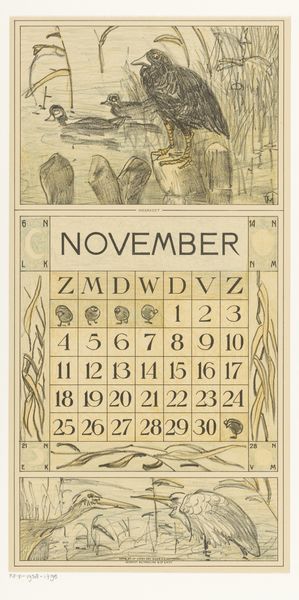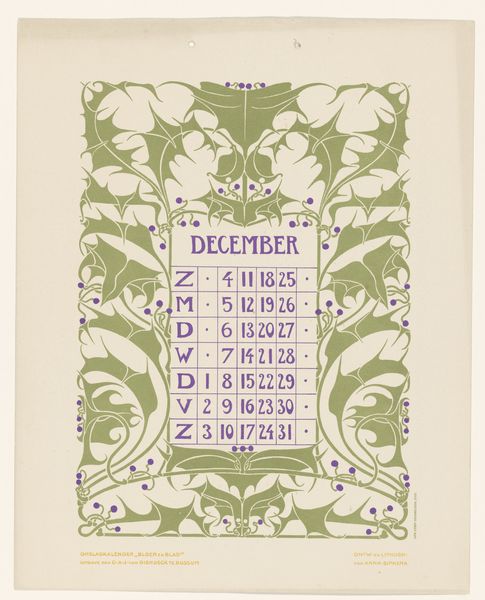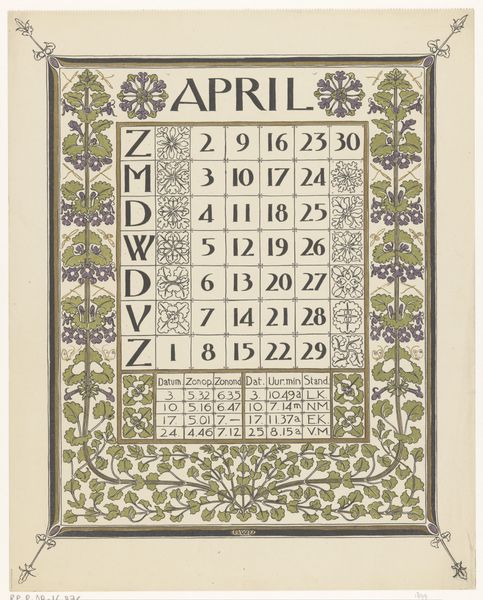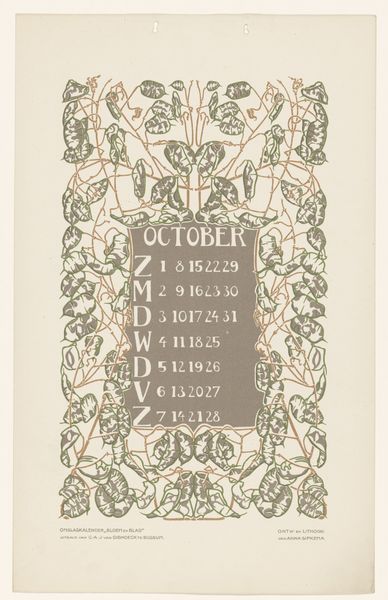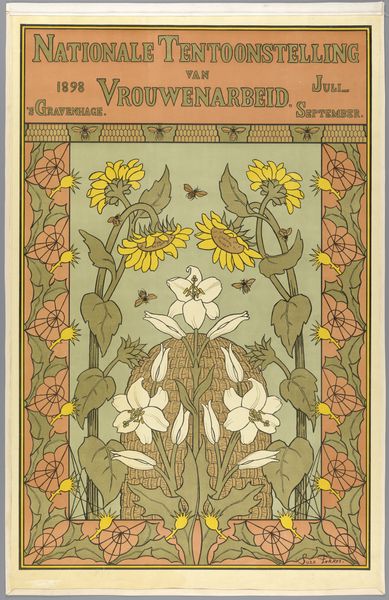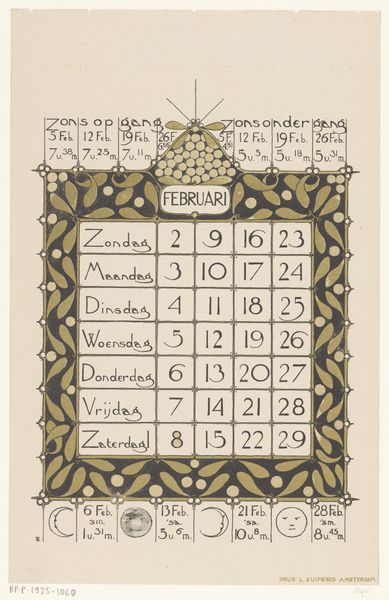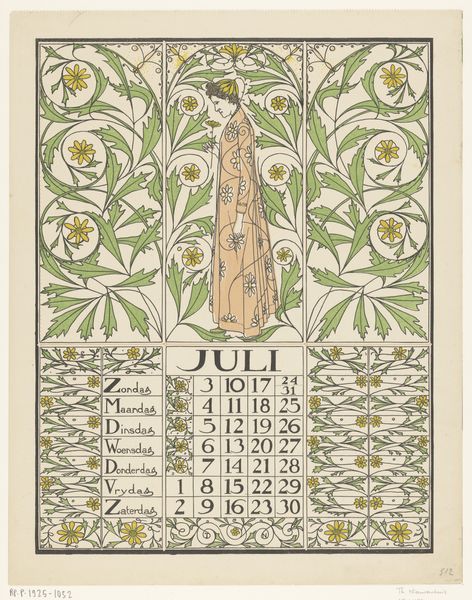
drawing, graphic-art, typography, poster
#
drawing
#
graphic-art
#
natural stone pattern
#
naturalistic pattern
#
organic
#
art-nouveau
#
flower
#
wood background
#
pattern background
#
pattern design
#
typography
#
ethnic pattern
#
organic pattern
#
vertical pattern
#
pattern repetition
#
decorative-art
#
layered pattern
#
poster
Dimensions: height 357 mm, width 284 mm
Copyright: Rijks Museum: Open Domain
This is a calendar page for November 1898, made by Theo Nieuwenhuis. It's a lithograph, a type of print where the design is drawn on a flat stone or metal plate, then printed. What I find fascinating here is how the medium – lithography – determined the look and feel of the image. See how the design has been simplified into bold outlines and flat colors, echoing the aesthetics of the Arts and Crafts movement with its emphasis on clear, honest design. The flowers and leaves, rendered in shades of green and white, are stylized and decorative. Lithography was a relatively new technology at the time and allowed for mass production of images, meaning this calendar could be widely distributed. In its time, the design would have brought a touch of artistry to everyday life, elevating the mundane function of tracking days into an aesthetic experience. It blurs the boundaries between art, craft, and commercial design.
Comments
No comments
Be the first to comment and join the conversation on the ultimate creative platform.


